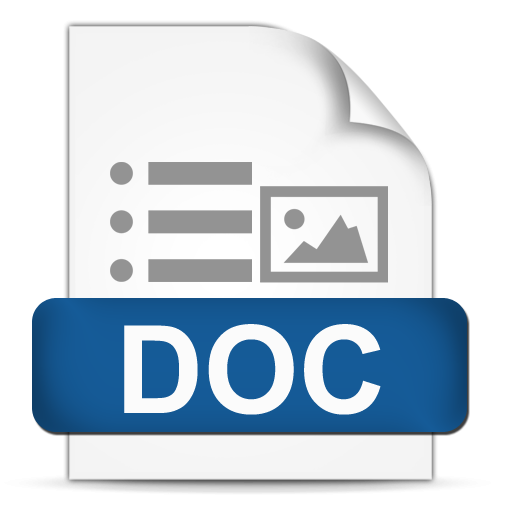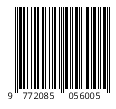Analisa Perbandingan Citra Hasil Segmentasi Menggunakan Metode K-Means dan Fuzzy C Means pada Citra Input Terkompresi
DOI:
https://doi.org/10.26623/elektrika.v13i2.3182Keywords:
medical, pattern processing, segmentation, k-means, fuzzy c meansAbstract
In pattern recognition, image processing plays a role in automatically separating objects from the background. In addition, the object will be processed by the pattern classifier. In the medical world, image processing plays a very important role. CT Scan (Computed Tomography) or CAT Scan (Computed Axial Tomography) is an example of an image processing application that can be used to view fragments or cross sections of parts of the human body. Tomography is the process of producing two-dimensional images from three-dimensional film through several one-dimensional scans. Magnetic resonance imaging (MRI) is the image most often used in the field of radiology. MRI images can display the anatomical details of objects clearly in multiple sections (multiplanar) without changing the patient's position. In this study, two methods were compared, namely K-Means and Fuzzy C Means, in a segmentation process with the aim of separating between normal areas or areas with disturbances (lesions). The images used are brain and chest MRI images with a total of 10 MRI images. The image quality of the segmentation results is compared with the quality test using the Variation of Information (VOI) parameters, Global Consistency Error (GCE), MSE (Mean Square Error), PSNR (Peak Signal to Noise Ratio) and segmentation time.
In pattern recognition, image processing plays a role in automatically separating objects from the background. In addition, the object will be processed by the pattern classifier. In the medical world, image processing plays a very important role. CT Scan (Computed Tomography) or CAT Scan (Computed Axial Tomography) is an example of an image processing application that can be used to view fragments or cross sections of parts of the human body. Tomography is the process of producing two-dimensional images from three-dimensional film through several one-dimensional scans. Magnetic resonance imaging (MRI) is the image most often used in the field of radiology. MRI images can display the anatomical details of objects clearly in multiple sections (multiplanar) without changing the patient's position. In this study, two methods were compared, namely K-Means and Fuzzy C Means, in a segmentation process with the aim of separating between normal areas or areas with disturbances (lesions). The images used are brain and chest MRI images with a total of 10 MRI images. The image quality of the segmentation results is compared with the quality test using the Variation of Information (VOI) parameters, Global Consistency Error (GCE), MSE (Mean Square Error), PSNR (Peak Signal to Noise Ratio) and segmentation time.Downloads
References
Nurhasanah, Segementasi Jaringan Otak Putih, Jaringan Otak Abu-Abu, Dan Cairan Otak Dari Citra MRI Menggunakan Teknik K-Means Clustering, J. Apl. Fiska, vol. 7, no. 2, pp. 90 95, 2011.
B. R. Jipkate and V. V. Gohokar, A Comparative Analysis of Fuzzy C-Means Clustering and K Means Clustering Algorithms, Int. J. Comput. Eng. Res., vol. 2, pp. 737 739, 2012.
A. S. B. Samma and R. A. Salam, Adaptation of K-Means Algorithm for Image Segmentation. 2009.
P. Panwar, G. Gopal, and R. Kumar, Image Segmentation using K-means clustering and Thresholding, Int. Res. J. Eng. Technol., vol. 03, no. 05, pp. 1787 1793, 2016.
T. Sutoyo, E. Mulyanto, O. D. N. V. Suhartono, and Wijanarto, Teori Pengolahan Citra Digital. Yogyakarta: ANDI, 2009.
I. W. A. W. K and A. K, Penerapan Algoritma K-Means pada Kompresi Adaptif Citra Medis MRI, INFORMATIKA, vol. 11, no. 2, pp. 139 151, 2015.
R. S. Kabade and M. S. Gaikwad, Segmentation of Brain Tumour and Its Area Calculation in Brain MR Images using K-Mean Clustering and Fuzzy C-Mean Algorithm, Int. J. Comput. Sci. Eng. Technol., vol. 4, pp. 524 531, 2013.
S. J. Saida, L. Srinivas, and R. Sivaram, An Efficient K-Means and C-Means Clustering Algorithm for Image Segmentation, Int. J. Sci. Appl. Inf. Technol., vol. 1, no. 5, pp. 84 87, 2012.
A. Bala and A. K. Sharma, Color Image Segmentation using K-Means Clustering and Morphological Edge Detection Algorithm, Int. J. Latest Trends Eng. Technol., pp. 48 55, 2016.
P. Fauzdar and S. Kindri, Comparitive Analysis Of K Means And Fuzzy C Means Algorithm, Int. J. Eng. Res. Technol., vol. 2, no. 6, pp. 2088 2095, 2013.
D. A. Masatu, I. Soesanti, and H. A. Nugroho, Penerapan Algoritma Kompresi JPEG dan Metode Fuzzy C Means pada Kompresi Citra Berbasis Entropi, J. Penelit. Tek. Elektro dan Teknol. Inf., vol. 1, no. 1, pp. 7 11, 2014.
Jiawei Han, Micheline Kamber, Jian Pei, Data Mining Concept and Techniques Third Edition, Morgan Kaufmann, 2012.
Jiawei Han, Micheline Kamber, Data Mining: Concepts and Techniques Second Edition, Diane Cerra Publisher, 2006.
M. North, Data Mining for the Masses, 2012.
S. panda, "Color Image Segmentation Using K-means Clustering and Thresholding Technique," IJESC, pp. 1132-1136, 2015.
Downloads
Additional Files
Published
Issue
Section
License
Authors who publish this journal agree to the following terms:
The author owns the copyright and grants the journal the first publication rights with the work simultaneously licensed under the Creative Commons Attribution 4.0 International License which allows others to share the work with recognition of the authorship of the work and initial publication in the journal.
Authors may enter into separate additional contractual agreements for non-exclusive distribution of the published journal version of the work (e.g., posting it to an institutional repository or publishing it in a book), in recognition of its initial publication in this journal.
Authors are allowed and encouraged to post their work online (e.g., in institutional repositories or on their websites) before and during the submission process, as it can lead to productive exchanges, as well as earlier and larger citations of published works (See The Effects of Open Access).

This work is licensed under the Creative Commons Attribution 4.0 International License.










